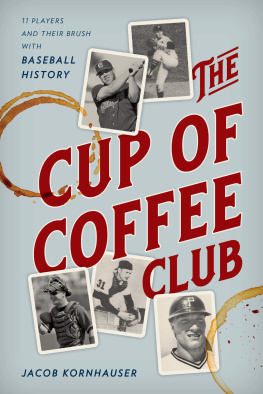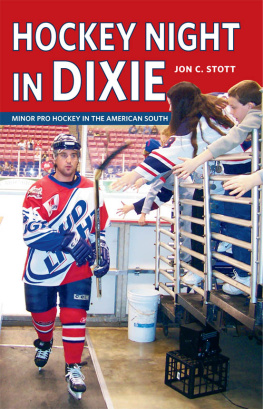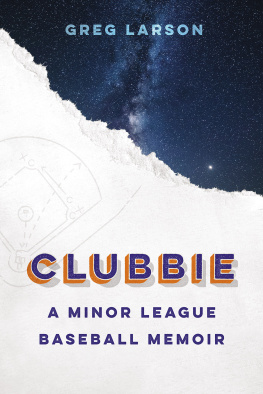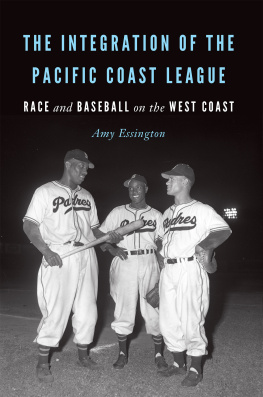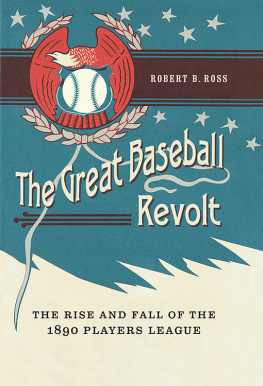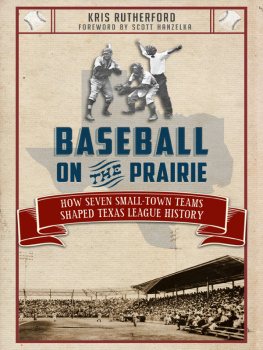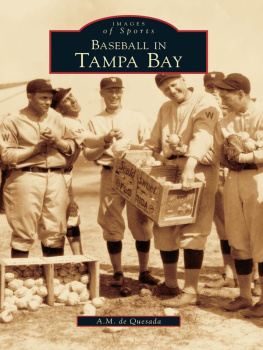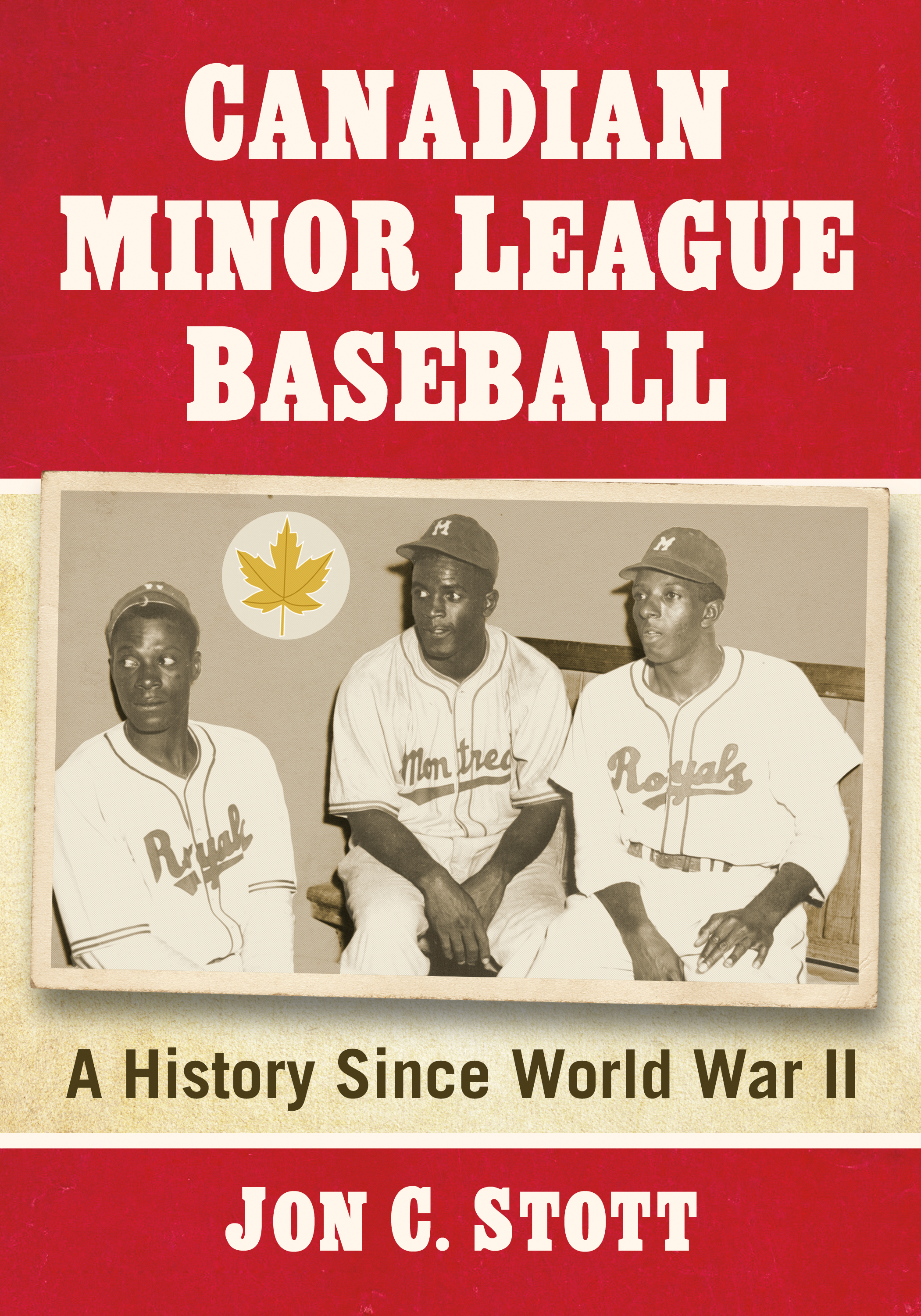Canadian Minor League Baseball
Also by Jon C. Stott and from McFarland
Beer 101 North: Craft Breweries and Brewpubs of the Washington and Oregon Coasts (2017)
Minor Leagues, Major Boom: Local Professional Baseball Revitalized (2004)
Leagues of Their Own: Independent Professional Baseball, 19932000 (2001)
Canadian Minor League Baseball
A History Since World War II
Jon C. Stott

McFarland & Company, Inc., Publishers
Jefferson, North Carolina
Library of Congress Cataloguing-in-Publication Data
Names: Stott, Jon C., author.
Title: Canadian minor league baseball : a history since World War II / Jon C. Stott.
Description: Jefferson, North Carolina : McFarland & Company, Inc., Publishers, 2022. | Includes bibliographical references and index.
Identifiers: LCCN 2021058952 | ISBN 9780786469925 (paperback : acid free paper)
ISBN 9781476645001 (ebook)
Subjects: LCSH: Minor league baseballCanadaHistory. | Baseball teamsCanadaHistory. | BISAC: SPORTS & RECREATION / Baseball / History
Classification: LCC GV863.15.A1 S76 2022 | DDC 796.357/640971dc23/eng/20211223
LC record available at https://lccn.loc.gov/2021058952
British Library cataloguing data are available
ISBN (print) 978-0-7864-6992-5
ISBN (ebook) 978-1-4766-4500-1
2022 Jon C. Stott. All rights reserved
No part of this book may be reproduced or transmitted in any form or by any means, electronic or mechanical, including photocopying or recording, or by any information storage and retrieval system, without permission in writing from the publisher.
Front cover: (left to right) Roy Partlow, Jackie Robinson and John Wright of the Montreal Royals in 1946 (National Library and Archives of Quebec)
Printed in the United States of America
McFarland & Company, Inc., Publishers
Box 611, Jefferson, North Carolina 28640
www.mcfarlandpub.com
Table of Contents
Acknowledgments
Although this book bears my name as author, it would not have been possible without the assistance and support of many individuals and organizations. That statement is found in so many acknowledgments that it seems almost to be a clich. It is not. Without the help of many people, a book such as this could never have come to fruition. I would first like to acknowledge the encouragement and support of two people from McFarland: Layla Milholen, who, many years ago, invited me to take up this project, and David Alff, who has been patient and encouraging throughout the process, always willing to grant an extension and offer valuable advice. The staffs at the City of Victoria Archives, City of Edmonton Archives, City of Toronto Archives, City of Ottawa Archives, and Bibliotheque et Archives Nationales du Quebec have provided invaluable assistance in tracking down photographs, as has Jason Beck of the B.C. Sports Hall of Fame. I am also grateful to Chad Scarsbrook of Way Back Winnipeg, Jeffrey Reed of London Ontario Sports (londonontariosports.com), and Daniel Papillon of Quebec City, who have generously provided photographs. John Horne of the National Baseball Hall of Fame located photographs of Hall of Fame managers and players who had played in Canada earlier in their careers. Stephani Ellis of the Vancouver Canadians, Dan Chase of the Winnipeg Goldeyes, and Jean Grignon-Francke of les Capitales de Quebec provided photographs of the stadiums of three of the most successful twenty-first-century Canadian teams. A special thank you to Gary Tater and Denyse Conroy who, when I rediscovered my love of minor league baseball in the 1990s, adopted me into the Edmonton Trappers family. And, as usual, to my daughter Clare, who has provided a warm home, great meals, and continued support during my many writing ventures, thank you.
Preface
During the 75 seasons of professional baseball played between 1946 and 2020, 71 teams represented 35 Canadian cities and played in 21 minor leagues operating either under the aegis of the National Association of Professional Baseball Leagues (called Minor League Baseball since 1999) or independently without any relationship to the National Association. During this period 16 teams operated for less than a year (most notably the eight teams of the Canadian Baseball League of 2003), while another 14 lasted three seasons or less. Only seven have operated continuously for 20 or more years, the longest-tenured being the Winnipeg Goldeyes of the independent Northern League and American Association who, since 1994, have played 27 consecutive seasons.
The teams were manned by future major leaguers (including 14 who would be elected to the Hall of Famefour as managers), veterans of the Negro Leagues who had been prohibited from playing for National Association teams until late in their careers (three were named to the Hall of Fame), aging players seeking to extend their careers, younger players hoping to advance their way up the minor league ladder, and rookies, some of them only weeks out of high school. Although most of the players were from the United States, there were many Canadians (including future Hockey Hall of Fame defenseman Doug Harvey), as well as players from Mexico and the Caribbean and around the world, most notably from Japan. Beginning in 2014 Cuba allowed players to become members of les Capitales de Quebec of the independent Canadian-American League.
The Montreal Royals and the Toronto Maple Leafs played in classic ball parks, stadia that had been built for the purpose of housing professional teams and could seat well over 10,000 spectators. Many teams shared fields with local amateur or semi-pro teams and the outfield dimensions were often much shorter than those of professional parks. In Winnipeg and Ottawa, teams performed on diamonds that had been laid out on the playing fields of Canadian Football League teams. And in Saint-Hyacinthe, Quebec, a team played on the infield of a horse racetrack. It wasnt until the early 1990s, when the Professional Baseball Agreement, which governed the relationship between the minor leagues and the major leagues and established rigid playing field and facility standards, that many stadiums were extensively renovated or new ones constructed.
Canadian Minor League Baseball: A History Since World War II is a chronicle history of the minor and independent league teams that have played in Canada since 1946, when leagues that had suspended operations during World War II were reactivated and new ones formed through 2020, when, because of restrictions resulting from the Covid-19 pandemic, only one Canadian team, the independent Winnipeg Goldeyes, took the field (but played their home games in Fargo, North Dakota). The history is organized in three main parts. Part I, The Minors Expand and Contract in Canada, examines the six seasons following the war, a time when hundreds of ball players were returning from duty in the armed services anxiously hoping to resume their interrupted careers and when war-weary citizens searched for types of entertainment that had been restricted during the war years. However, by the middle of the twentieth century, attendance began to drop off as other outdoor summer activities, along with the indoor watching of television, engaged fans time and entertainment budgets. In Canada, the number of minor and independent league teams reached a high of 17 in 1947 and dropped only by one at the start of the 1951 season. However, in July 1951, the Border League, which included teams in Kingston and Cornwall, Ontario, ceased operations.


